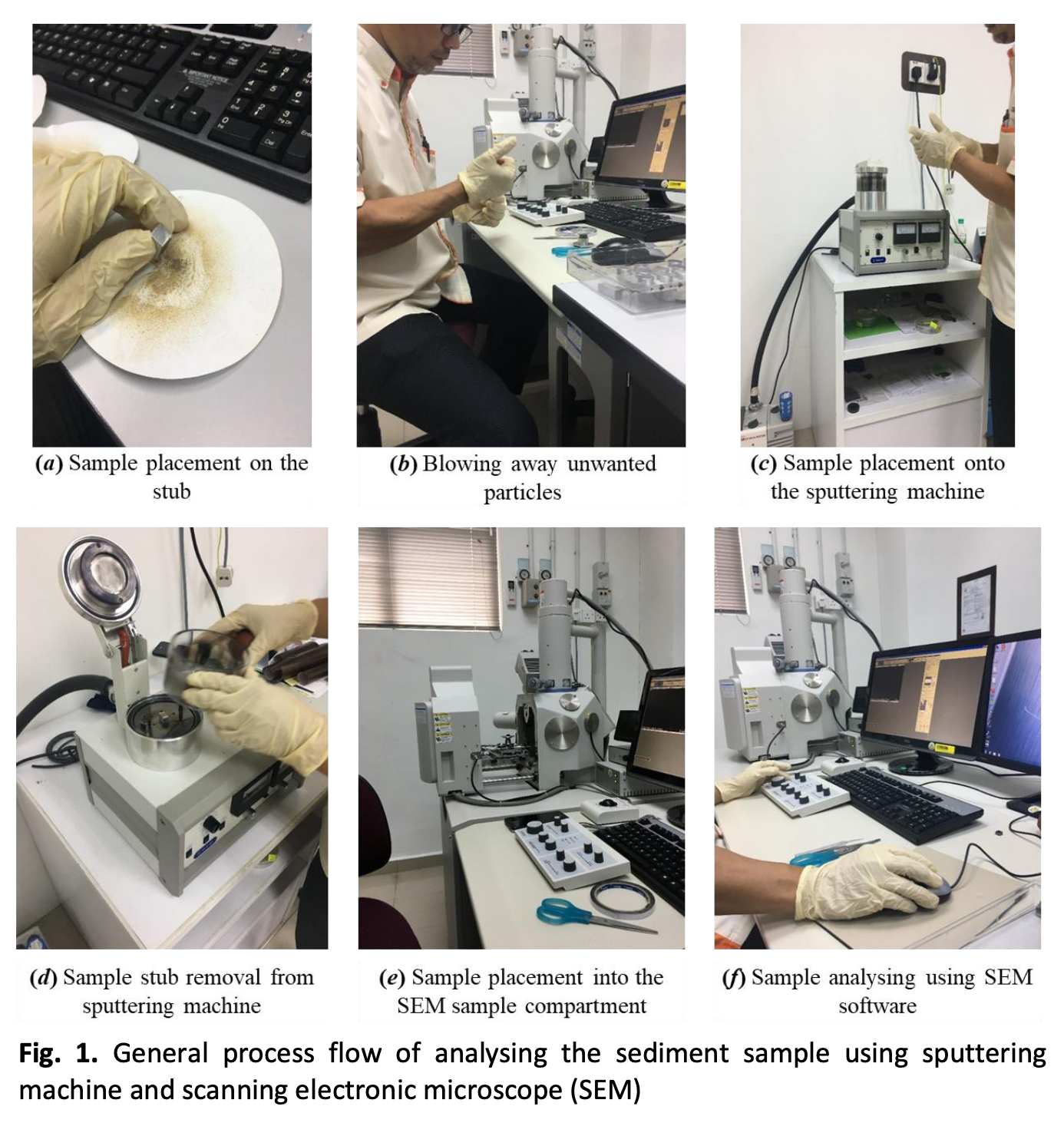Discrete Particle Method Numerical Simulation on The Distributions of Suspended Particles in The Flow of Ogee Spillway Structure
DOI:
https://doi.org/10.37934/arfmts.98.1.4255Keywords:
Dam spillway, discrete particles model (DPM), particle image velocimetry (PIV), scanning electron microscope (SEM), sediment, suspended particlesAbstract
Dam failure is undeniably catastrophic and one of its major causes is the soil erosion near the dam structure. In this paper, the characteristics and compositions of soil sediment in dam spillway structure were investigated to determine its impact on the occurrence of erosion. Four suspended samples were taken from the vicinity of Ogee dam spillway. Sediment analysis using scanning electron microscope revealed that the soils consist of relative high metal contents of aluminium, iron and magnesium. These metals will attribute to the erosion of dam wall, which subsequently reduce the durability of wall against high hydrostatic pressure exerted by the reservoir. Nonetheless, as the average sizing of suspended particles at each sampling location were capped at 4.55 μm, the damages incurred to the dam were minimal. Additionally, the suspended particles around the dam spillway was numerically simulated with the inclusion of discrete phase model. The numerical data were in great consensus with the corresponding finding attained from the particle image velocimetry experimental of a scaled-down dam model, with the discrepancy not more than 4.89 %. The movement of suspended particles due to the water flow can be tracked numerically and it is found the sediment prone to accumulate at the vicinity of dam spillway.
Downloads
































